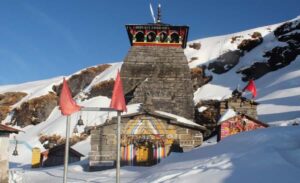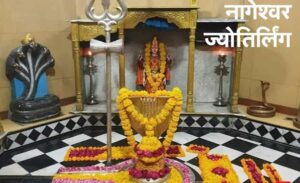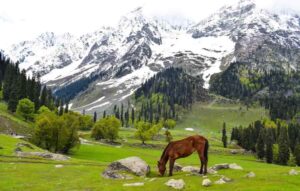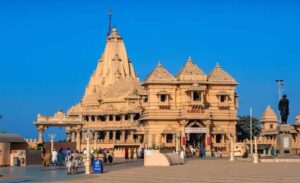Tungnath Temple: A Sacred Abode in the Himalayas
Tungnath Temple, nestled in the lap of the majestic Himalayas, stands as a testament to both spiritual devotion and architectural brilliance. Perched at an elevation of 3,680 meters (12,073 feet), it holds the prestigious title of being the highest Shiva temple in the world. This sacred site is not only a place of worship but also a trekker’s delight, offering breathtaking views of the surrounding peaks. This comprehensive exploration delves into the historical, religious, and architectural aspects of Tungnath Temple, inviting readers to unravel the mysteries and marvels of this ancient sanctuary.
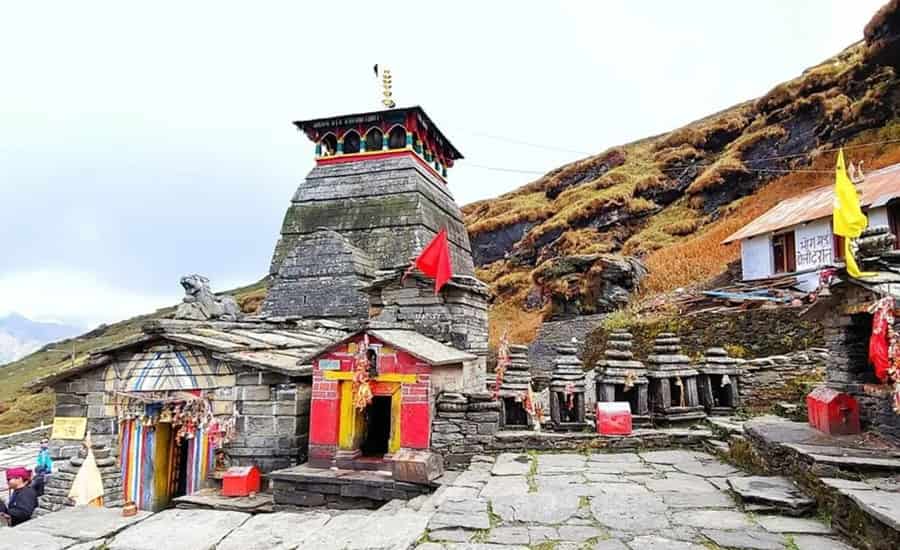
Historical Background
The history of Tungnath Temple is intertwined with the rich tapestry of Hindu mythology and ancient traditions. According to legend, the temple is a part of the Panch Kedar, a group of five sacred shrines dedicated to Lord Shiva. The story goes that after the battle of Kurukshetra in the Mahabharata, the Pandavas sought redemption for their sins related to the war. Lord Shiva, however, eluded them by taking the form of a bull. The parts of Shiva’s body are believed to have surfaced at five different locations, and these sites came to be known as the Panch Kedar. Tungnath is said to be the place where Shiva’s arms appeared.
The temple’s antiquity is difficult to ascertain precisely, but it is widely believed to be over a thousand years old. Historical records and inscriptions are scarce, adding an air of mystery to the temple’s origin. Over the centuries, Tungnath has undergone several renovations and has been a focal point for pilgrims and spiritual seekers alike.
Architectural Marvels
Tungnath Temple is a fine example of ancient North Indian architecture, characterized by its intricate carvings and use of local stone. The temple is constructed using traditional wooden beams and stones, showcasing the architectural expertise of the craftsmen of the time. The sanctum sanctorum houses a black marble idol of Lord Shiva, and the walls are adorned with images and sculptures depicting various mythological stories.
The temple’s unique location on the rugged terrain of the Himalayas also presents engineering challenges that were overcome by the skilled architects of the past. The structure is designed to withstand the harsh weather conditions and occasional snowfall that the region experiences.
Religious Significance
Tungnath Temple holds immense religious significance for Hindus, particularly followers of Lord Shiva. Devotees believe that visiting the Panch Kedar, with Tungnath as a pivotal point, helps in seeking spiritual purification and redemption from sins. The temple attracts pilgrims from all over the country who embark on a challenging trek to reach this sacred site.
The temple is open only for a few months during the year due to heavy snowfall in the region. The doors are ceremoniously opened on Akshaya Tritiya, an auspicious day in the Hindu calendar, and closed on Diwali. Pilgrims undertake this arduous journey to attain the divine blessings of Lord Shiva and to experience a sense of spiritual fulfillment amidst the serene Himalayan landscape.
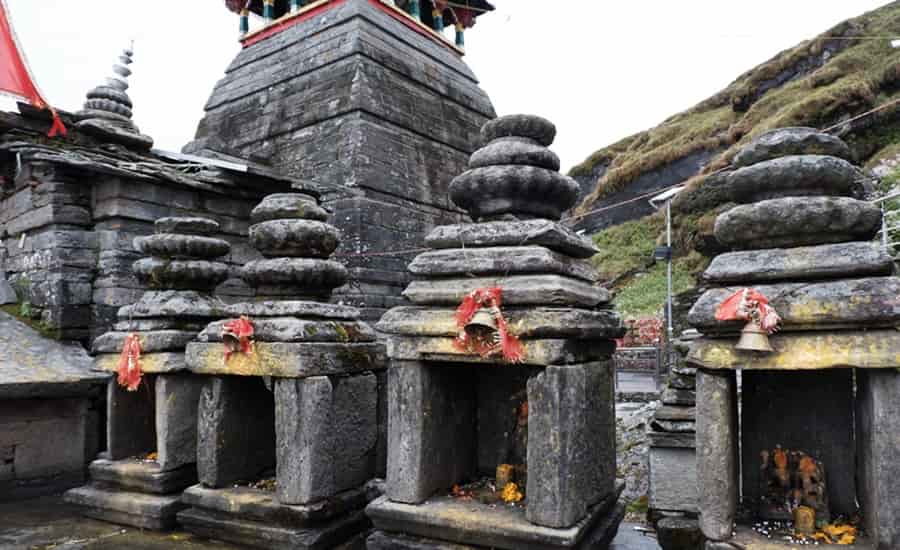
Trek to Tungnath
The journey to Tungnath Temple is not just a pilgrimage but also an exhilarating trekking experience. The trek begins at Chopta, a picturesque hill station located at a lower altitude. The trek is divided into different segments, with lush green meadows, dense forests, and steep ascents that challenge the endurance of trekkers.
One of the highlights of the trek is the Chandrashila Summit, which offers panoramic views of the Himalayan range. Trekkers can witness the sunrise from Chandrashila, bathing the snow-clad peaks in a golden hue. The trek to Tungnath not only tests physical stamina but also provides an opportunity for spiritual introspection as one traverses through the pristine beauty of the Himalayas.
Flora and Fauna
The trek to Tungnath takes visitors through diverse landscapes, showcasing the rich biodiversity of the region. The lower altitudes are adorned with rhododendron and oak forests, providing a colorful spectacle during the spring season. As the trek ascends, the vegetation transitions to alpine meadows, and trekkers may encounter various species of Himalayan flora.
The region is also home to a variety of wildlife, including Himalayan musk deer, wild boars, and numerous bird species. The trek to Tungnath offers nature enthusiasts an opportunity to appreciate and conserve the unique ecosystems of the Himalayas.
Cultural Festivals and Celebrations:
The opening and closing ceremonies of Tungnath Temple are accompanied by vibrant cultural festivities. Pilgrims and locals participate in processions, folk dances, and traditional rituals, creating a festive atmosphere in the serene Himalayan surroundings.
During the annual Maha Shivaratri festival, Tungnath attracts a large number of devotees who undertake the challenging trek to seek the blessings of Lord Shiva. The temple resonates with the sound of bells, chants, and devotional music, creating a spiritually charged ambiance.
How to Reach
The nearest town to Tungnath is Chopta. Here’s a general guide on how to reach Tungnath:
By Air
The nearest airport to Tungnath is the Jolly Grant Airport in Dehradun, approximately 226 kilometers away. From the airport, you can hire a taxi or use public transportation to reach Chopta.
By Rail
The nearest railway station is Rishikesh, which is about 209 kilometers away from Tungnath. From Rishikesh, you can hire a taxi or take a bus to reach Chopta.
By Road
1- Delhi to Tungnath
- Distance: Approximately 455 kilometers
- Route: Delhi – Haridwar – Rishikesh – Devprayag – Srinagar – Rudraprayag – Ukhimath – Chopta
- Mode of Transport: You can either drive or take a bus from Delhi to Chopta.
2- Rishikesh to Tungnath
- Distance: Approximately 209 kilometers
- Route: Rishikesh – Devprayag – Srinagar – Rudraprayag – Ukhimath – Chopta
- Mode of Transport: You can hire a taxi or take a bus from Rishikesh to Chopta.
3- Haridwar to Tungnath
- Distance: Approximately 225 kilometers
- Route: Haridwar – Rishikesh – Devprayag – Srinagar – Rudraprayag – Ukhimath – Chopta
- Mode of Transport: You can hire a taxi or take a bus from Haridwar to Chopta.
Chopta to Tungnath
Once you reach Chopta, you have to trek to Tungnath. The trek is approximately 3.5 kilometers and is considered moderate in difficulty. It takes around 2-3 hours to reach Tungnath from Chopta.
Best Time to Visit
The best time to visit Tungnath Temple largely depends on the individual preferences of the traveler and the type of experience they are seeking. However, there are certain factors to consider for an optimal visit, taking into account weather conditions, accessibility, and the overall trekking experience.
Summer (May to June)
- Summer is generally considered the best time to visit Tungnath for most tourists. During this period, the weather is mild and pleasant, with daytime temperatures ranging from 10 to 20 degrees Celsius.
- The trekking route is relatively free of snow, and the surrounding landscapes are lush and vibrant with blooming flowers.
- The clear skies offer excellent visibility, providing panoramic views of the Himalayan peaks.
Monsoon (July to September)
- Monsoon brings heavy rainfall to the region, making the trekking trails slippery and challenging. Landslides are also a risk during this season.
- The temple remains open, but the conditions can be unfavorable for trekking enthusiasts. Pilgrims and trekkers should exercise caution and be well-prepared for rain and wet terrain.
Autumn (October to November)
- Autumn is another favorable time to visit Tungnath. The weather remains clear, and the landscapes are adorned with the colors of fall.
- The temperatures start to drop, especially in November, but the days are still pleasant for trekking. This season provides a unique and picturesque experience.
Winter (December to April)
- Winter brings heavy snowfall to the region, transforming Tungnath and its surroundings into a winter wonderland.
- The temple is closed during the winter months due to the harsh weather conditions and heavy snow accumulation.
- Adventure enthusiasts may still choose to visit Chopta, the base camp, during winter for a snow trekking experience. However, accessing Tungnath temple itself is not recommended during this period.
Tips for Visitors:
- Check Opening Dates: Tungnath Temple opens on Akshaya Tritiya (usually in May) and closes on Diwali (October/November). Plan your visit during this window to ensure access to the temple.
- Trekking Gear: Depending on the season, pack accordingly. Summers may require light trekking gear, while autumn and winter may demand warmer clothing, waterproof jackets, and trekking boots.
- Health Precautions: Given the high altitude, visitors are advised to acclimatize properly, stay hydrated, and be aware of symptoms related to altitude sickness.
- Check Weather Conditions: Keep an eye on weather forecasts, especially during the monsoon season, and be prepared for sudden changes in weather.
Conclusion
Tungnath Temple stands as a symbol of both natural beauty and spiritual devotion, offering a unique blend of adventure and tranquility. Its rich history, architectural grandeur, and religious significance make it a compelling destination for pilgrims, trekkers, and cultural enthusiasts alike.
The journey to Tungnath is not merely a physical ascent but also a spiritual odyssey that transcends the boundaries of the material world. As visitors navigate through the rugged terrain and dense forests, they not only witness the awe-inspiring landscapes of the Himalayas but also connect with the divine energy that permeates this sacred abode. Tungnath, with its towering presence in the heart of the Himalayas, continues to draw people seeking solace, enlightenment, and a profound connection with the divine.

